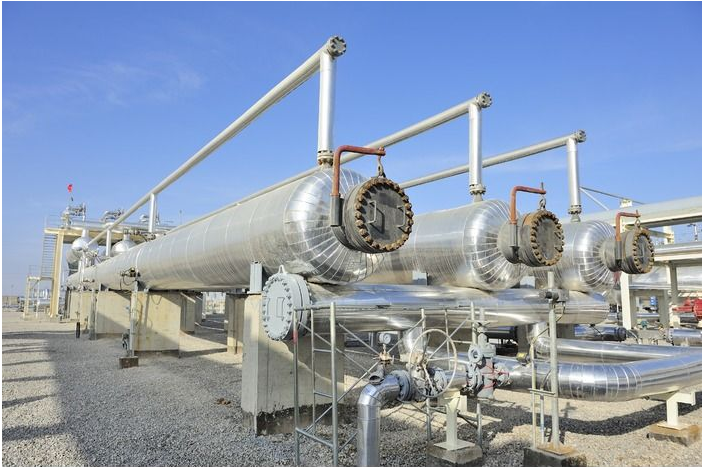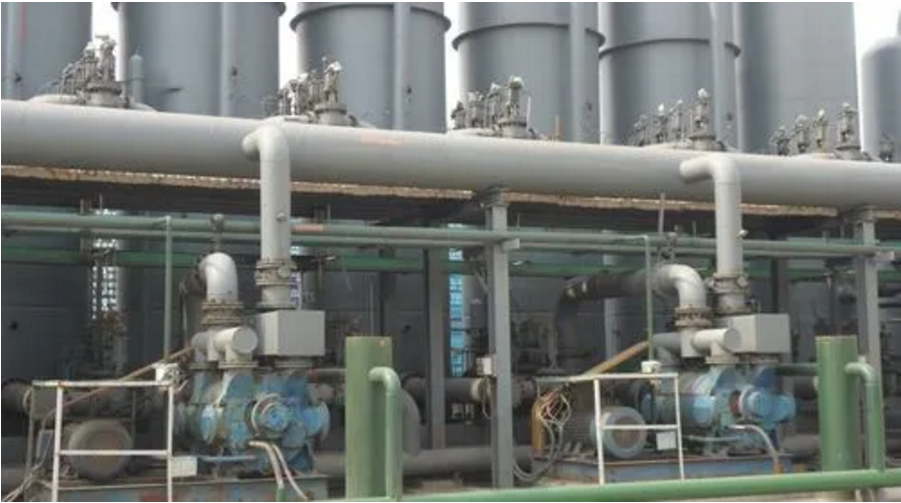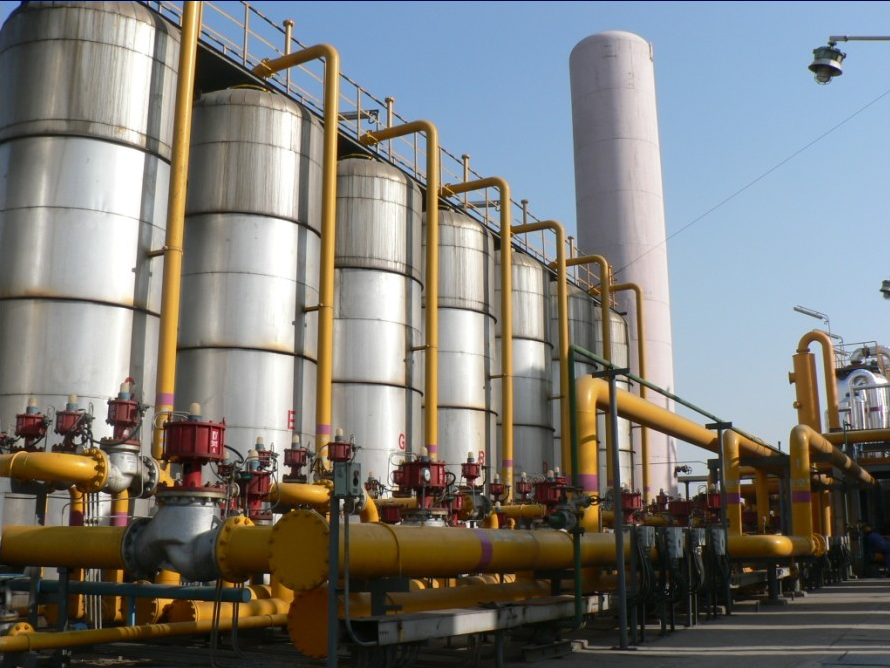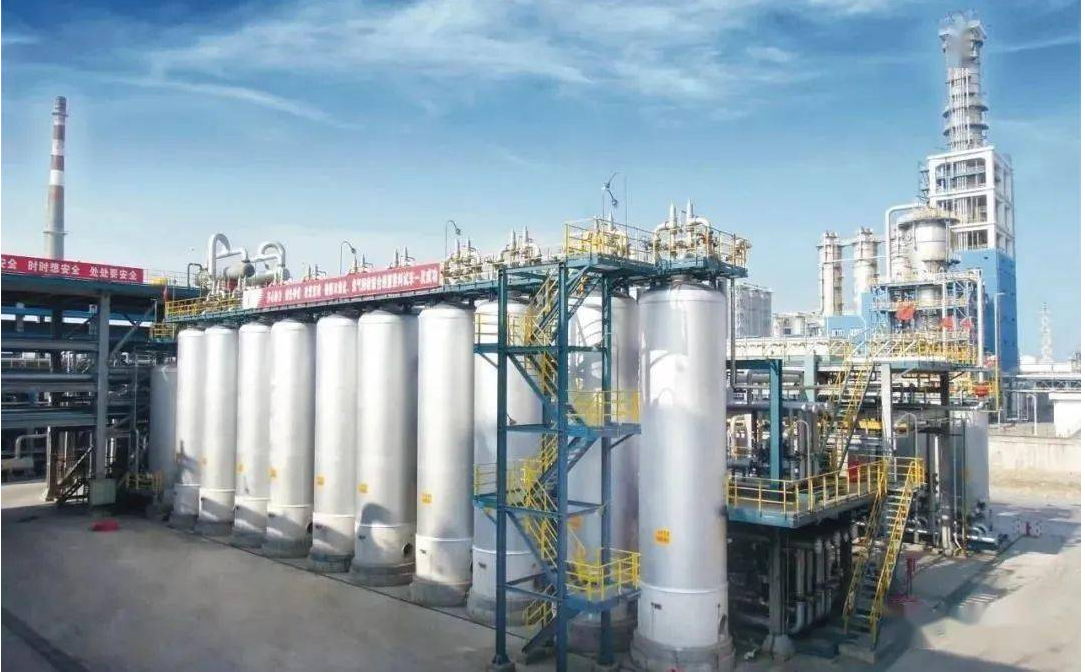Desulfurization
According to the analysis of coal quality, the feedstock gas contains about 7.5g/Nm3 of H2S, and the gas dust content at the outlet of the water washing tower in the gasification section is 50~60mg/Nm3. Sulfur is corrosive to the equipment and pipelines in the subsequent process ,which will cause poisoning of the reaction catalyst in the subsequent process. If the dust content in the gas is too high, it will cause serious wear of the hydrogen and nitrogen compressor and reduce the service life of the equipment. Therefore, the coal gas must be desulfurized, dedusted and other purification treatment.
Acid gas removal mainly refers to the removal of H2S and C02 in the gas. At present, the low-pressure gasification process often needs to desulfurize the coal gas. Generally, wet oxidation is used. There are many wet desulfurization methods.According to the characteristics of the absorption process, it can be divided into chemical absorption method and physical absorption method. Using sodium carbonate, ammonia water and alcohol amine solution to absorb hydrogen sulfide is chemical absorption method. Using cold methanol to absorb hydrogen sulfide is a physical absorption method. According to the regeneration method, it can be divided into circulation method and oxidation method. The circulation method is to expel hydrogen sulfide from the rich liquid absorbing hydrogen sulfide under the condition of reduced pressure heating or gas stripping. The oxidation method is to oxidize the absorbed rich liquid with air, so that the dissolved hydrogen sulfide is oxidized to elemental sulfur. The reaction as follows,
H2S+0.5O2 H20+S
The above oxidation reaction requires the aid of a catalyst to proceed. Catalysts used in industry include hydroquinone, sodium anthraquinone disulfonate (abbreviated as ADA method), copy glue and chelated iron.
Oxidative desulfurization can not only remove hydrogen sulfide but also recover by-product sulfur,which is widely used in various synthetic ammonia plants.

At present, the commonly used desulfurization methods in China include ammonia liquid phase catalytic method, ADA method, tannin extraction method, and PDS method.
Ammonia liquid phase catalytic desulfurization with high desulfurization efficiency and recyclable sulfur, which is suitable for desulfurization of gas with high H2S content.However, when the CO2 content in the gas is high, the amount of CO2 absorbed by ammonia water will reduce the pH value of the solution, thereby affecting the desulfurization efficiency.
ADA desulfurization has the characteristics as non-toxic solution, high purification degree, high desulfurization efficiency. However, raw materials are scarce, the problem of sulfur plugging is more serious when dealing with high-sulfur gas.
In addition to the advantages of the ADA method, the desulfurization method of the tannin extract method or the PDS method can also better solve the phenomenon of tower plugging, small resistance, and stable operation. Coupled with the new technology of jet regeneration, the desulfurization efficiency can be further improved and the investment can be reduced. At the same time, the tannin extraction resource is abundant, the price is cheap, and the operating cost is low.
Decarbonization
The decarbonization device is to remove the excess CO2 in the shift gas, which is beneficial to the synthesis of ammonia. At the same time, it reduces the power consumption caused by the compression of CO2.
There are many ways to remove CO2 in the shift gas. At present, there are generally three methods to choose from in the atmospheric pressure gasification process, namely chemical absorption method (thermal method), physical absorption method (cold method), and dry method (pressure swing adsorption method) .
The chemical absorption method is mainly suitable for the situation where the partial pressure of carbon dioxide in the gas is low and the purification degree is high. The most widely used ones are the improved hot potash method, the improved MDEA method, and the sterically hindered amine method. However, the regeneration of the solvent in these methods requires heating, so the heat consumption is high, and the operating cost is high.

The physical absorption method is suitable for situations where the partial pressure of carbon dioxide is high, such as water washing method, propylene carbonate method, NHD method, etc. The absorption solvent of the physical absorption method or the adsorbent of the dry method does not react with carbon dioxide, which does not need to be heated during regeneration, as long as the pressure is reduced for desorption. The total energy consumption is lower than that of the chemical absorption method, but its purification degree is also lower than that of the chemical absorption method. At present, Chinese ammonia synthesis plants adopt atmospheric pressure gasification to decarbonize mainly three decarbonization processes: propylene carbonate method, NHD method and pressure swing adsorption method. The first two kinds are wet decarbonization processes, which have the advantages of low loss of carbon monoxide and hydrogen, and low one-time investment. But they all need to use absorbent, adopting decompression regeneration, running high power consumption, and consuming solvent, among which NHD also consumes cooling capacity. Generally speaking, their process flow is long, the operating cost is high, and the operation is complicated. The pressure swing adsorption is a dry method, and its absorbents are molecular sieves, activated carbon and silica gel. The adsorbent is loaded at one time, service life of which is generally about 10 years. And it has many advantages,such as no regeneration ,no complex pretreatment system, high degree of automation, convenient operation, low operating cost, no corrosion of equipment and no pollution to the environment. The disadvantage is that there is more loss of useful gas.

For the pressurized gasification process, the gas at the gasification outlet is directly converted to sulfur resistance, and then enters the subsequent purification process. Generally, low temperature methanol is used to elute sulfur and decarburization or NHD desulfurization and decarburization.
The low-temperature methanol washing method belongs to physical absorption. At low temperature (-50C ~-60C), the solvent absorption capacity is large, the solution circulation is small, the gas purification degree is high, the regeneration heat consumption is low, and the operation cost is low. H2S, COS, CO2, the solution is non-foaming and non-corrosive, and the concentration of H2S is simple. In the case of large fluctuations in the sulfur content of raw coal, the concentration of H2S can also meet the requirements of sulfur recovery. Some of the equipment and process pipelines in the above process need to use low-temperature steel, which will be imported from Europe or Japan. Therefore, the capital investment is relatively high, but its biggest advantage is that the price of the solvent is cheap, and the consumption index and energy consumption are lower than other purification processes. It is widely used in large-scale synthetic ammonia plants and methanol production plants.

When choosing a decarburization method, compatibility with the ammonia purification process must first be considered, which is guaranteed to meet the requirements of synthetic ammonia gas. At the same time, it is necessary to choose a technological route that is advanced in technology, mature and reliable, stable in production, low in consumption, low in cost, low in investment, and non-toxic and non-corrosive. Considering the degree of purification, NHD, propylene carbonate method and PSA can all meet the requirements. From the point of view of energy consumption, this design adopts 3.0MPa PSA for decarbonization.
The basic principle of pressure swing adsorption is to use the adsorbent to have different adsorption capacity, adsorption speed and adsorption force under different partial pressures. And under a certain pressure, it has the characteristics of selective adsorption for each component of the separated gas mixture. The impurity components in the raw material gas are removed by pressure adsorption, and the decompression desorbs these impurities to regenerate the adsorbent. Therefore, the purpose of continuous separation of gas mixture can be achieved by adopting multiple adsorption beds and cyclically changing the pressure of each combined adsorption bed.